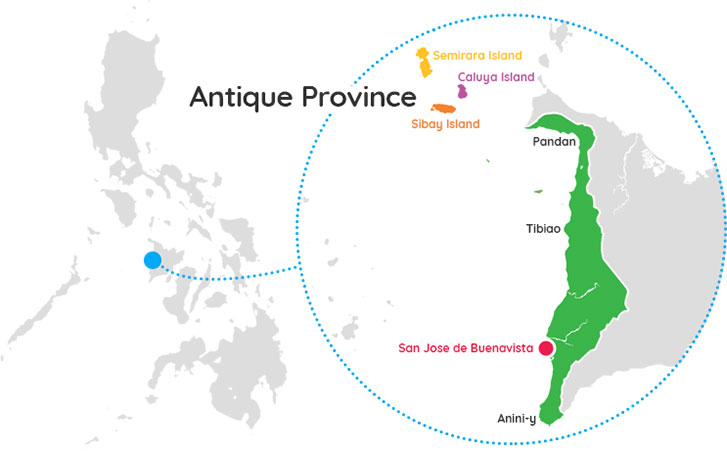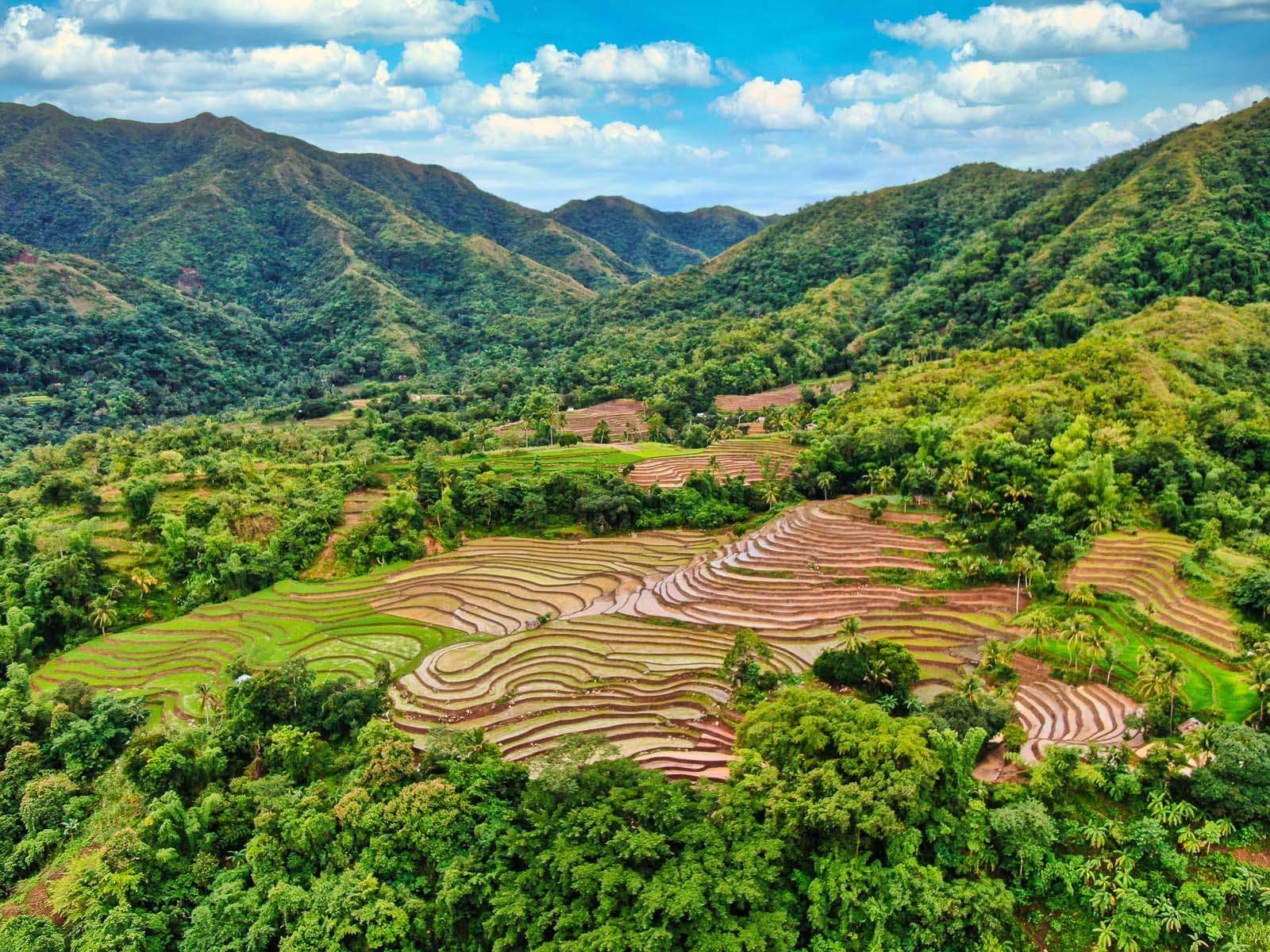About antique

Antique, officially the Province of Antique, is a province in the Philippines located in the Western Visayas region. Its capital is San Jose de Buenavista, the most populous town in Antique. The province is situated in the western section of Panay Island and borders Aklan, Capiz and Iloilo to the east, while facing the Sulu Sea to the west.
The province is home to the indigenous Iraynun-Bukidnon, speakers of a dialect of the Kinaray-a language, who have crafted the only rice terrace clusters in the Visayas through indigenous knowledge and sheer vernacular capabilities. The rice terraces of the Iraynun-Bukidnon are divided into four terraced fields, namely, General Fullon rice terraces, Lublub rice terraces, Bakiang rice terraces, and San Agustin rice terraces. All of the rice terrace clusters have been researched by the National Commission for Culture and the Arts and various scholars from the University of the Philippines. There have been campaigns to nominate the Iraynun-Bukidnon Rice Terraces, along with the Central Panay Mountain Range, into the UNESCO World Heritage List.
Antique was one of the three sakups (districts) of Panay before Spanish colonizers arrived on the islands. The province was known at that time as Hantík, the local name for the large black ants found on the island. The Spanish chroniclers, influenced by the French, recorded the region's name as Hantique with the (silent 'h'), but this was only adopted in areas near Malandog River in present Hamtic town which then became the provincial capital (shortly before Bugason and San Jose). The province bearing its former capital's name is spelled and pronounced as "Antique" (än-ti-ké), without 'h' and pronounced in (Kinaray-a) dialectic way.
History
Historians believe that the Negrito or Attis tribes were the first to settle Panay. Oral histories, handed down as 'Maragtas', state that ten 'Datus' or minor Malay chieftains escaped persecution from a city called Othan on Borneo Island by a tyrannical ruler called Makatunau. ing. The 10-man Datu, led by Datu Putih, sailed north with his family and community, leaving Borneo and landing on Panay Island. There are claims that the story of the Malagtas dates back to 1212, coinciding with the transition from the Srivijaya empire to Majapahit, but there is no written evidence for this, and no existing claims link that date to Borneo. Nevertheless, the story of Malagtas should be considered part of the local history of the people.
Upon arrival, the Malay Datu met the Ati Chief Datu Malikd and his wife Maniwanthiwan. They presented the chief with a salakot (wide-brimmed hat) (exaggerated, but now believed to be pure gold by the locals), including a gold necklace that he wore while fleeing Borneo. , earrings, bracelets, trinkets and other pearls. In honor of him, he gave him fine clothes to buy him land to live on. Datu Malikd responded to Datu's generosity by granting the lowlands to the Malayans, who migrated there with the Ati tribe, as the mountains were sacred to them. The legacy of this landing is commemorated with antiques each year during the Binilayan Festival.
Panay Island was then divided into three sakups: Hantik, Achaean and Iron Iron. Irong-Irong became Iloilo, Akean became present-day Akran and Capiz, and Hantik (also known as Hamtik or Hamtik) became Antique. Hantick is named after a large black ant called "Hantik Hantick" found on the island.
The Sakup of Hantic was given to one of the ten Datu, Datu Sumakwell, who according to tradition was a master of the sword and the wisest of them all. . The three Sakups were later governed as a political unit called the Kedatouan of Majaas, also under Datu Sumakwell. Datu Sumakwell founded the town of Marrangog, believed to be the first Malay settlement in the country. Marungog is now a barangay in the present-day Hamtik City named after the historic Sakup.
During the Spanish colonial period, the coastal province was vulnerable to attacks by Moro raiders. Under the direction of the Spanish friars, a series of watchtowers, like the 'Old Watchtower' in Libertad and Estaca Hill in Bugasong, were built to guard Antique.
In 1790, Antique was converted into a politico-military province with the town of Antique (now Hamtic) as its first capital. The provincial seat of government was later transferred to Bugasón (old name of Bugasong), and finally to San Jose de Buenavista.
In 2014, the first ever Philippine rice terraces found outside the Cordilleras was discovered in Antique through satellite and a team of scientists and locals. The heritage site, known as the Antique Rice Terraces of the Panay-Bukidnon people, is believed to be at least 200 years old. In 2017, the province hosted the Palarong Pambansa for the very first time.
Members from antique
Listings in antique
More Provinces

albay
Albay, officially the Province of Albay, is a province in the Bicol Region in Southeastern Luzon Island of the Philippines, mostly on the southeastern part of the island of Luzon. Its capital (and largest city) is the city of Legazpi, the regional center of the whole Bicol Region, which is ...read more

apayao
Apayao is a landlocked province of the Philippines located in the Cordillera Administrative Region in Luzon. Its capital town is Kabugao. The province borders Cagayan to the north and east, Abra and Ilocos Norte to the west, and Kalinga to the south. Prior to 1995, Kalinga and Apayao comprised a ...read more











